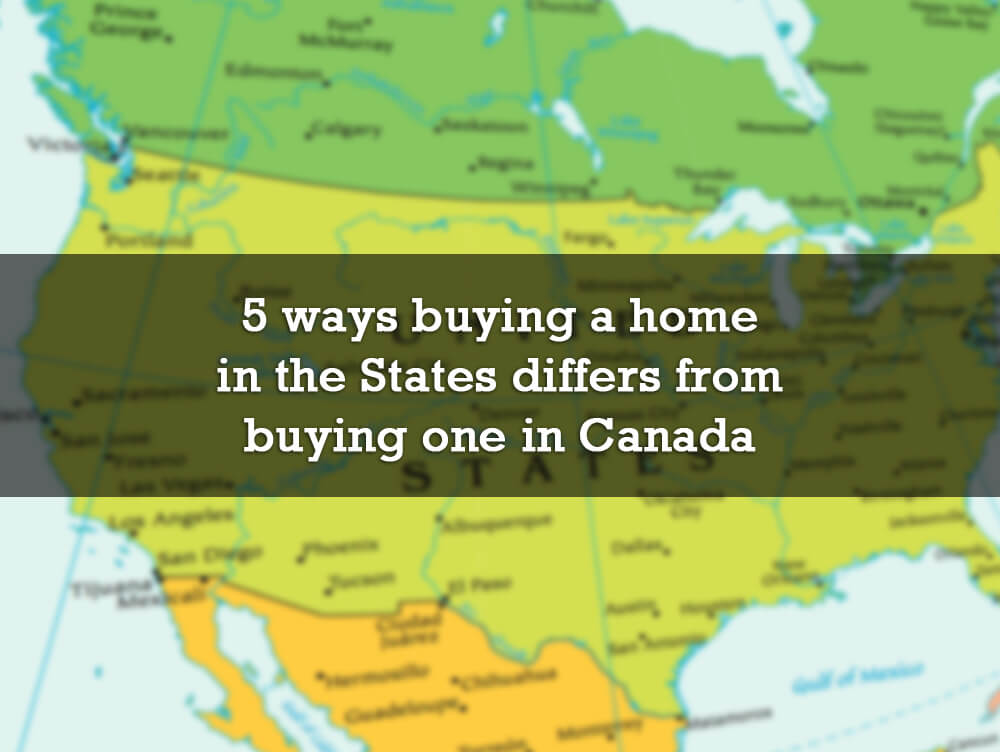Owning property in the United States is attractive to some people, especially with good-deal inventory still around in some areas of the US. While the Canadian dollar has dropped in value, it’s in a good position, and Canadian homebuyers wouldn’t feel much of a pinch when buying American.
Buying in the States, however, isn’t exactly the same as buying in Canada, and there are some important differences to keep in mind. Here are 5:
Timing
It doesn’t take long to apply for and receive a mortgage in Canada. In fact, you could complete the process in just a few days. In the States, however, you could find yourself taking a month or longer.
Documentation
Buying an American mortgage requires more documentation than Canadians are used to, and it can include the following:
- Canadian or U.S. driver’s license
- Passport
- Social Insurance card and/or Social Security card
- Work visa (if applicable)
- Verification of retirement income
- Paystubs reflecting 30-day and year-to-date income
- Most recent two years T4 or W2 forms
- If self-employed or own investment properties:
- T1/1040 forms for the most recent 2 years, including all schedules
- T2/1040 forms for the most recent 2 years, including all schedules
- Trust documents
- Articles of incorporation and attorney opinion letter
- Executed Purchase Contract (and all addenda) for any purchases under contract
- Most recent 12-month mortgage payment history for all properties owned in Canada or abroad
- Most recent insurance and property tax statements for all properties owned in Canada or abroad
- Most recent 2-months statements for:
- Personal checking and savings
- Line of Credit if using for funds to close on home
- RSP accounts (registered and/or non-registered)
- Investments/brokerage if using for funds to close on home
Costs
Some third-party expenses in the United States are mandatory, driving up the final cost. These include property appraisal, titling, and certain insurances. Expect to pay 3–5% of the purchase price in fees.
Interest
While Canadian mortgages are compounded semi-annually, American mortgages are compounded monthly. Plus, your interest may be deductible against taxes in the USA.
Down payments
Down payments in the States usually run around 20%, but the requirement depends on the purpose of your purchase. A down payment for a primary residences, for example, will vary compared to, say, an investment property or second home.
If you’re thinking of buying a property in the United States, contact us today. We’d be happy to answer your questions and help you find the best solution.
Have you purchased property in the United States? Share your experience below.

